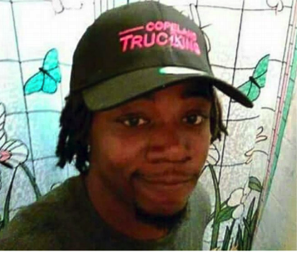
On November 15, 2015 twenty four year old Jamar Clark was shot by Minneapolis police. He died the day following the incident, at Hennepin County Medical Center after being taken off life support. His death sparked weeks of protests and an 18-day occupation outside a north side police precinct. A key issue was whether Clark was handcuffed at the time of the shooting. Several witnesses said he was handcuffed, while police claimed he was not. The confrontation that led to Clark’s death began when police were called by paramedics who said he was interfering with their efforts to treat an assault victim. Officers Mark Ringgenberg and Dustin Schwarze responded to the scene. According to an account laid out by Hennepin County Attorney Mike Freeman, police were called to north Minneapolis early Nov. 15 by paramedics who were trying to treat Clark’s girlfriend for an assault in which Clark was the suspect and they claimed Clark was interfering.
The incident according to the police goes as follows. When police arrived, Clark refused orders to remove his hands from his pockets. Officers tried to handcuff Clark but couldn’t. Officer Mark Ringgenberg took Clark to the ground and ended up on his back atop Clark. Ringgenberg felt his gun shift from his hip to the small of his back. He reached back and felt Clark’s hand on his weapon. Ringgenberg said, “He’s got my gun,” according to Freeman. Schwarze said he dropped his handcuffs, put his gun to the edge of Clark’s mouth, and warned him to let go or he would shoot. Clark looked at Schwarze and said: “I’m ready to die.” According to Freeman, Schwarze pulled the trigger but the gun didn’t fire. Schwarze heard Ringgenberg say “shoot him” in a panicked voice, and Schwarze pulled the trigger again and the gun fired. Clark was shot in the head. Freeman said the entire incident, in which he said the deadly force was necessary, took 61 seconds from the time police first approached Clark. In March, Hennepin County Attorney Mike Freeman declined to file criminal charges against the officers. He cited forensic evidence in the BCA investigation that found no bruising of Clark’s wrists that handcuffs would likely have caused and found Clark’s DNA on Ringgenberg’s gun. Freeman also cited conflicting accounts by witnesses about whether Clark was cuffed. Mayor Betsy Hodges requested the civil rights investigation, conducted by the U.S. Attorney’s Office in Minnesota and the Justice Department’s Civil Rights Division. They will determine whether the officers intentionally violated Clark’s civil rights through excessive force. The investigation is being conducted in a high legal standard because an accident, bad judgment, or simple negligence is not enough to bring federal charges. The DOJ is also reviewing how the city responded to the protests that followed Clark’s death, in which Freeman said 20 civilian witnesses gave different versions of whether Clark was handcuffed. Two said he wasn’t, six weren’t sure and 12 said he was, but they disagreed on whether both his hands were cuffed and whether his hands were in front of him or behind his back. Freeman said he didn’t believe the witnesses were lying, but it’s not uncommon for people to have differing stories from different vantage points. He said in such cases, prosecutors need to look to forensic evidence. An internal police investigation is also expected once the results of the federal investigation are released.
